Scaling the majestic Mount Kilimanjaro is a bucket-list dream for many outdoor adventurers. The 8-day Lemosho route offers a thrilling challenge that rewards trekkers with a breathtaking journey through diverse landscapes and the chance to stand atop the highest free-standing mountain in the world. This carefully curated itinerary provides ample time for acclimatization, increasing the odds of successful summit bids. With expert guides leading the way and ensuring safety protocols, climbers can focus on the physical and mental demands of the ascent, ultimately experiencing a profound sense of accomplishment. But the journey is not without its obstacles – those who dare to take on Kilimanjaro must be prepared for the physical and mental demands of high-altitude trekking.
Good To Know
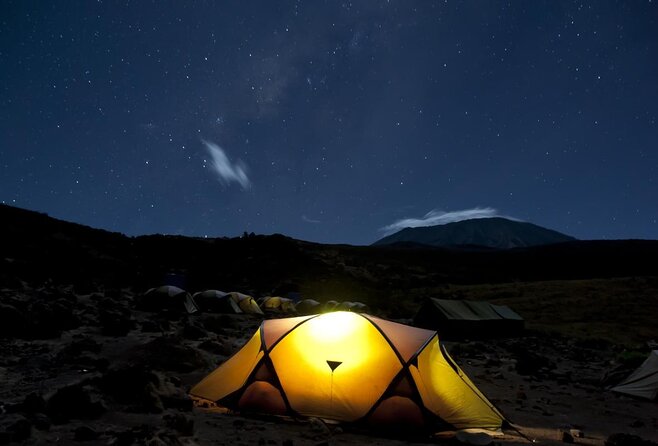
- The Lemosho route offers a gradual ascent over 8 days, allowing for effective acclimatization and reducing the risk of altitude-related illnesses.
- Trekkers will traverse diverse landscapes, from lush forests to high-altitude deserts, with opportunities to spot wildlife and enjoy panoramic views.
- Proper gear, including sturdy hiking boots, layered clothing, and a warm sleeping bag, is essential for comfort and safety during the trek.
- Maintaining a nutritious diet, staying hydrated, and closely monitoring for altitude sickness symptoms are crucial for a successful summit.
- The trek presents a profound sense of accomplishment, personal growth, and appreciation for the natural environment upon its completion.
Preparing for the Kilimanjaro Climb
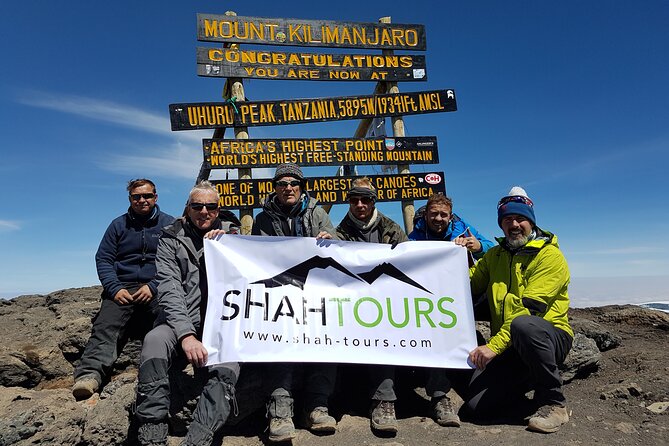
Preparing for the Kilimanjaro Climb requires thorough planning and consideration. Climbers must ensure they’re physically fit, as the trek demands a strong level of endurance.
Proper gear, like sturdy hiking boots and layered clothing, is essential to withstand the changing temperatures and weather conditions.
Acclimatization is crucial – climbers should allow their bodies time to adjust to the high altitude. Bringing personal medications, snacks, and hydration supplies is recommended.
Climbers should also familiarize themselves with the route, campsite facilities, and safety protocols.
With the right preparation, the Kilimanjaro Lemosho Climb can be an unforgettable and rewarding experience.
You can also read our reviews of more tours and experiences in Moshi.
Highlights of the Lemosho Route
The Kilimanjaro Lemosho Route is renowned for its breathtaking scenery and gradual ascent, making it a popular choice among trekkers.
Some of the highlights of this route include:
-
Traversing through the lush, forested lower slopes of the mountain, offering the chance to spot a variety of wildlife
-
Reaching the Shira Plateau, a stunning high-altitude desert landscape with sweeping views of the surrounding peaks
-
Climbing the Western Breach, a challenging but rewarding section that leads to the Crater Camp, situated at the base of the final ascent to the summit
-
Enjoying the serene beauty of the Barranco Valley, with its unique vegetation and dramatic cliffs
-
The opportunity to acclimatize gradually, reducing the risk of altitude-related illnesses and increasing the chances of a successful summit.
Daily Trekking Itinerary
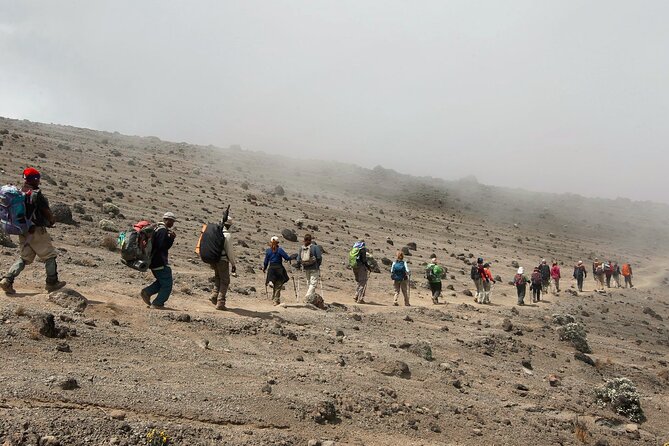
On the first day, hikers begin their trek from the Londorossi Gate, winding through lush rainforest trails and ascending gradually to the Mti Mkubwa (Big Tree) campsite.
Day two takes them through the moorland zone to Shira 1 Camp, with stunning views of the Western Breach and Kibo.
The third day climbs to the Shira Plateau, and day four reaches Barranco Camp after traversing the Great Barranco Wall.
Hikers then climb Barranco Wall on day five before descending to Karanga Camp.
The sixth day ascends to Barafu Camp, the base for the summit attempt.
Acclimatization and Altitude Considerations
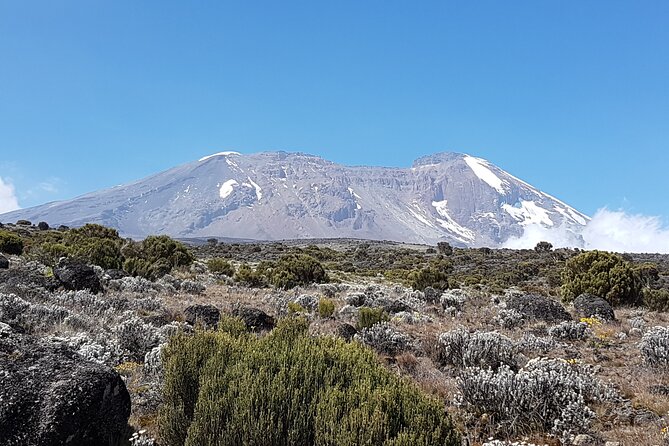
Proper acclimatization is crucial when attempting to summit Mount Kilimanjaro. The trek’s gradual elevation gain over multiple days allows climbers to adjust to the decreasing oxygen levels. This process is essential to avoid altitude sickness, which can be life-threatening.
Key considerations include:
- Ascending slowly, with no more than 1,000 feet of elevation gain per day
- Staying hydrated and eating well to support the body’s adaptation
- Monitoring for symptoms of altitude sickness, such as headaches, nausea, or fatigue
- Turning back or descending if altitude sickness becomes severe
- Traveling with experienced guides who can monitor climbers’ health and adjust the itinerary accordingly.
Adhering to best practices for acclimatization and altitude management is vital for a safe and successful Kilimanjaro climb.
Packing List and Gear Recommendations
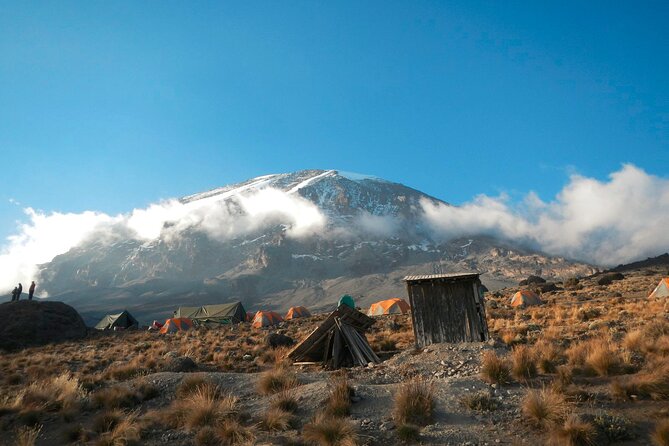
Ensuring you have the right gear is just as crucial as acclimatizing properly for a successful Kilimanjaro climb. The Lemosho route requires a comprehensive packing list, including rugged hiking boots, thermal base layers, and a high-quality waterproof jacket and pants.
Trekkers should also bring a sleeping bag rated for sub-zero temperatures, a headlamp, and sun protection. It’s essential to have a durable backpack that can carry your personal items and water. Trekking poles are highly recommended to ease the strain on your knees during long descents.
While the trek includes porter service for your main luggage, you’ll need to carry a daypack with your essentials. Following the recommended gear list will ensure you’re prepared for the challenging conditions on Kilimanjaro.
Nutrition and Hydration on the Trek
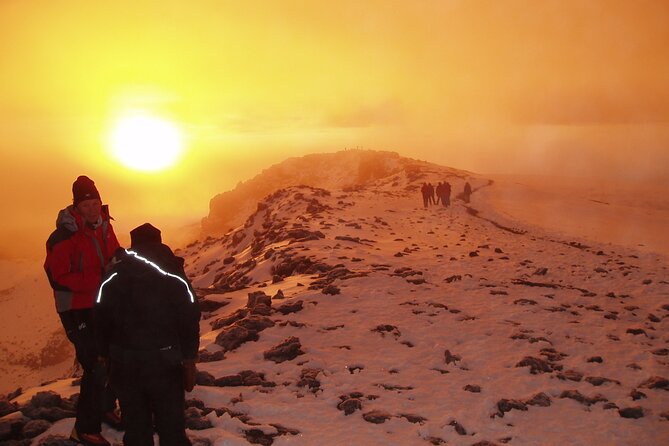
Maintaining proper nutrition and hydration is critical for successfully completing the Kilimanjaro Lemosho climb. Climbers will need to consume ample calories and fluids to fuel their bodies throughout the trek.
Some key tips for nutrition and hydration include:
- Eat high-calorie, nutrient-dense meals and snacks regularly
- Drink at least 3-4 liters of water per day, even when not thirsty
- Replenish electrolytes lost through sweat with sports drinks or electrolyte tablets
- Avoid alcohol, as it can exacerbate dehydration at high altitudes
- Pack a variety of easy-to-digest energy bars, dried fruits, and nuts for quick fuel on the go.
Staying well-fed and hydrated will help climbers maintain their energy, prevent altitude sickness, and maximize their chances of reaching the summit.
Safety Protocols and Emergency Procedures
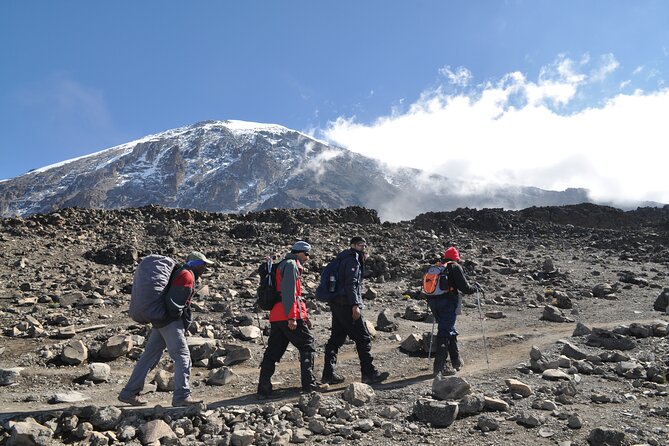
From the moment the Kilimanjaro Lemosho climb begins, guides diligently monitor climbers’ health and safety. They conduct twice-daily medical checks using a pulse oximeter to assess oxygen levels and detect any signs of altitude sickness.
Emergency oxygen and first-aid kits are provided, and guides are trained to respond swiftly to medical emergencies. Climbers are advised to report any symptoms immediately.
In the event of an evacuation, the tour includes access to Flying Doctor’s emergency services. Safety is paramount, and guides won’t hesitate to turn back or evacuate a climber if their condition warrants it.
Participants must be in strong physical condition and disclose any pre-existing medical conditions to ensure a safe and successful trek.
Post-Trek Reflections and Accomplishments
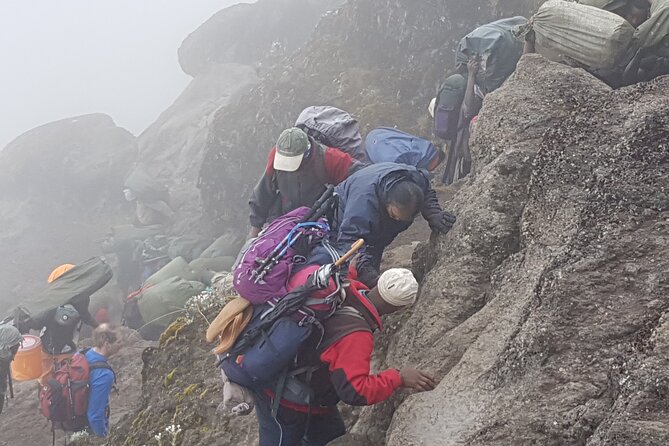
Upon completing the Kilimanjaro Lemosho climb, climbers are often filled with a profound sense of accomplishment. Reaching the summit of the iconic African mountain is a monumental achievement that leaves a lasting impact on those who undertake the challenge.
Some of the key post-trek reflections and accomplishments include:
- A deep appreciation for the power of the human spirit and the ability to overcome seemingly insurmountable obstacles
- A renewed sense of personal confidence and a belief in one’s own capabilities
- A heightened awareness of the fragility and resilience of the natural environment
- Cherished memories and a sense of camaraderie with fellow trekkers
- A renewed commitment to living a life of adventure, exploration, and personal growth.
Frequently Asked Questions
What Is the Ratio of Guides to Clients on This Trek?
The trek has a guide to client ratio of at least 1:5, as specified by the minimum guide ratios required by KINAPA (Kilimanjaro National Park Authority). The guides are trained and certified English-speakers.
Can I Upgrade My Sleeping Accommodations on the Trek?
Yes, travelers can upgrade their sleeping accommodations on the trek. Additional options include private toilet facilities, foldable beds, and an upgraded meal menu, though these come at an extra cost.
How Often Are Medical Checks Conducted During the Trek?
The hikers receive twice-daily health checks with a medical oximeter as part of the included services. These routine checks help ensure the group’s wellbeing and monitor for any altitude-related issues during the trek.
What Happens if I Need to Be Evacuated From the Mountain?
If emergency evacuation is needed, the trek operator will coordinate with the Flying Doctors Emergency Evacuation service, which is not included in the tour cost. Additional fees may apply for this critical medical transport off the mountain.
Can I Store Excess Luggage at the Starting Point of the Trek?
Yes, the tour includes luggage storage at the starting point in Moshi while you’re on the trek. You can leave any excess items you won’t need on the climb in a secure location.
The Sum Up
The Kilimanjaro Lemosho Climb is a rewarding journey that challenges climbers both physically and mentally. With proper preparation, essential gear, and expert guidance, adventurers can reach the summit and bask in the triumphant feeling of accomplishing a remarkable feat. The diverse landscapes, gradual acclimatization, and focus on safety make this expedition an unforgettable experience that fosters personal growth and a profound sense of achievement.
More Tour Reviews in Moshi
Not for you? Here's more nearby things to do in Moshi we have reviewed
- Mountain Kilimanjaro Climbing 6 Days Machame Route
- 6 Days Rongai Route Climbing Mt.Kilimanjaro
- 7-Day Kilimanjaro Climb Machame Route
- 7-Days Tour Mount Kilimanjaro Trekking via Machame Route
- Kilimanjaro: Lemosho Route and Camping Safari
- 8 Days 7 Nights Private Lodge Safari
- 5 Days Comfort Safari in Tanzania
- 2 Days Lodge Safari.
- One Day Tanzania Safari – Tarangire or Arusha National Park
- Day Trip Lake Manyara
- Mt.kilimanjaro-machame Route
- Tanzania Family Safari Adventure
